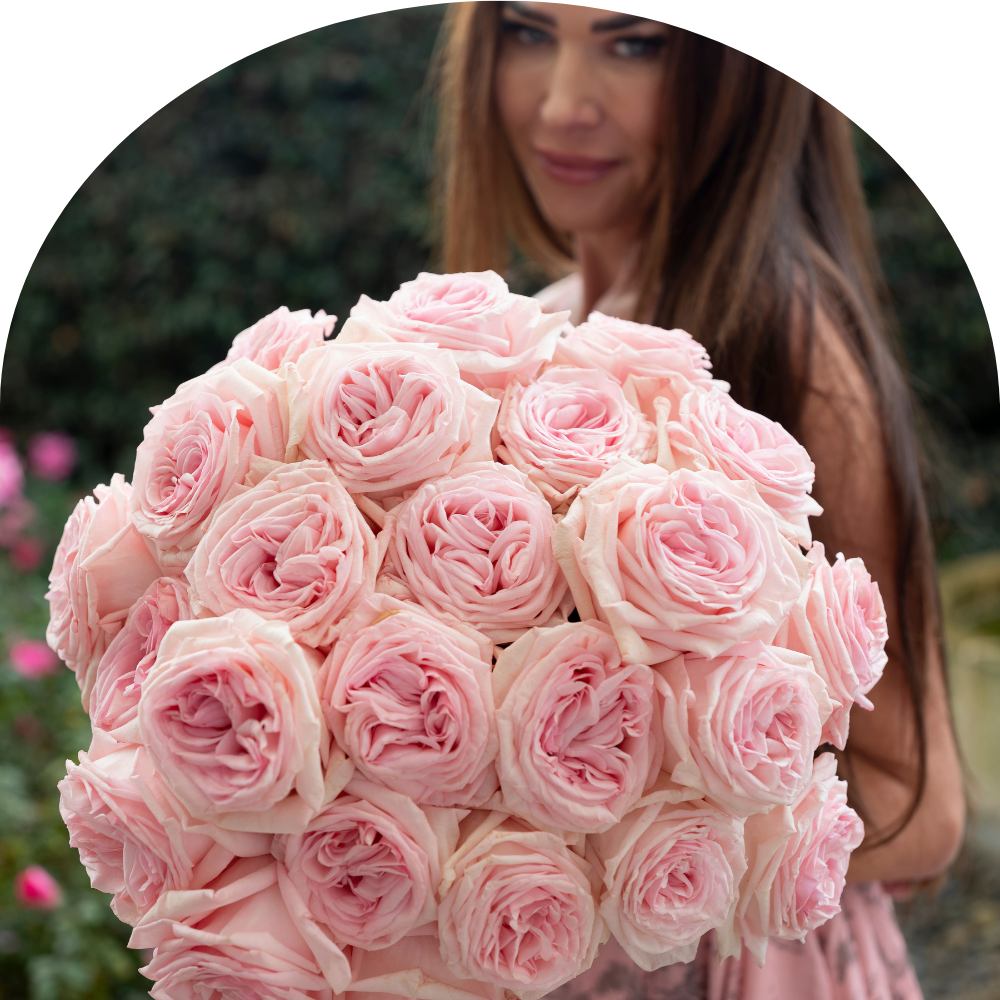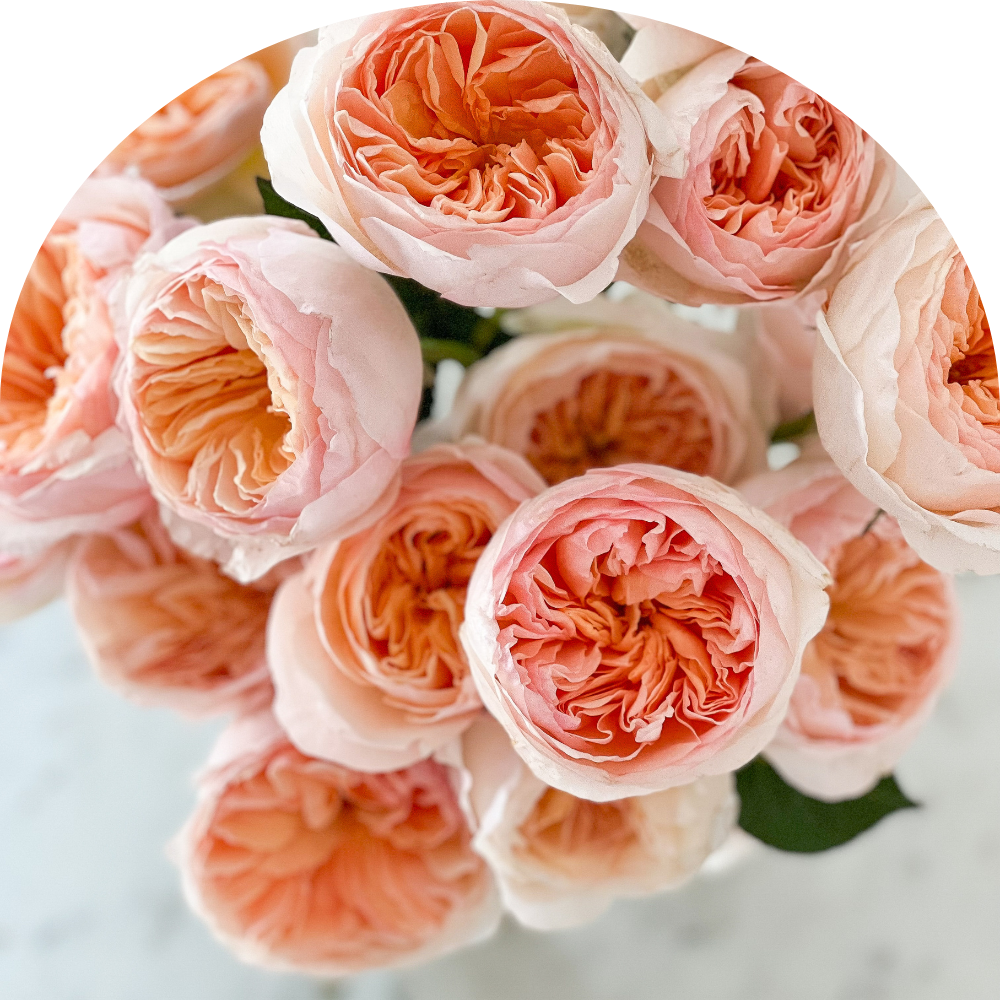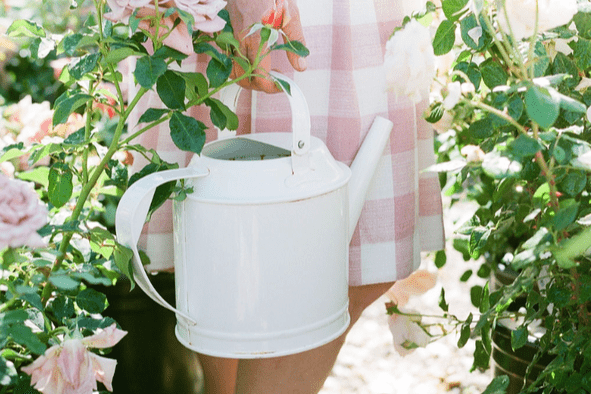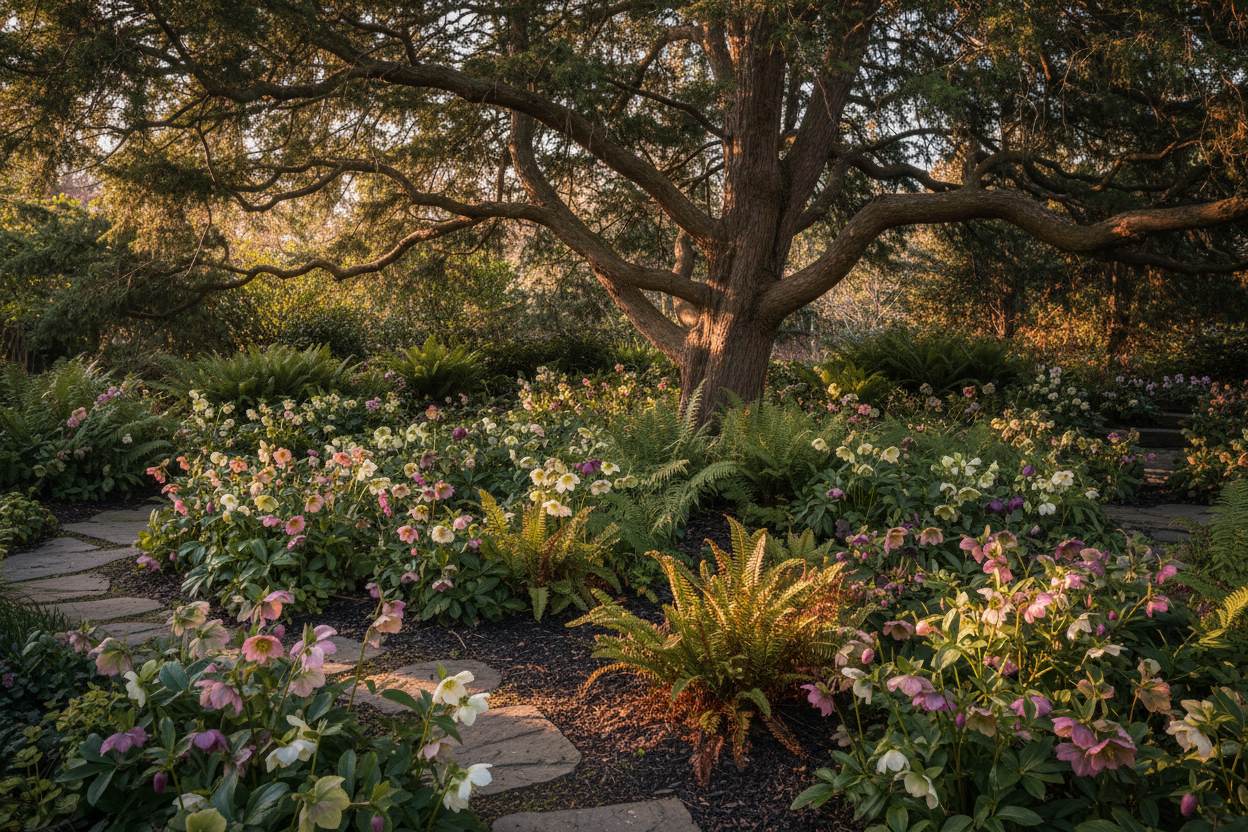The topic of watering roses is a popular one. Common questions we receive are “how often to water roses?” and “how much do we water our roses?”
These are somewhat loaded questions as there are so many variables that play important factors into the answers. I wish it was as easy as saying to give each rose bush x amount of gallons per week during the blooming season and you’ll have perfect roses. Ha, if only the answer is that simple! Every environment - soil, weather, sun, temperature, etc - will all contribute to watering requirements.
Hopefully, as you read through this guide you will have a better understanding of the particular needs of your own rose bushes. I will cover topics such as soil types, watering roses in containers, seasonality conditions, feeding roses, and the most efficient way to water roses.
Being in California, where we have been facing drought conditions, water usage is something we take very seriously. We do our best to make sure that when watering roses, we’re not overwatering and that the soil is absorbing the water for proper moisture levels.


Basics of Growing Roses: Soil Considerations
There are many aspects to consider when planning a rose watering schedule and soil consideration is at the top of the list. Paying attention to the soil moisture is going to be key for a plant’s health and wellness.
A quick look at the soil will tell you if it’s time to water, if you can wait a few days before watering again, or if your current watering schedule is working efficiently. Additionally, using your finger to check the moisture of the soil as a guide will help determine if you’re watering roses effectively.
Our daughter is two years old and loves the story of Goldilocks and the Three Bears. When I take her out to our rose fields to check on the soil conditions, I mimic the storyline as she laughs and loves learning about the roses. When I see a dry area that I know needs watering, I touch the soil, make a sad face and say, “this soil is too dry!” When I find an area where the watering just occurred or isn’t draining well and is a bit muddy, I touch the soil, also make a sad face and say, “this soil is too wet!” And when I take her to an area a day after being watered and I know the moisture level is perfect, I touch the soil, make a happy face and say, “ahhh, this soil is just right!” It’s a great way to remember as adults and a wonderful way to teach children.
Soil Type
Knowing the type of soil your rose bush is planted in will help determine a watering schedule.
Ideally, the soil is loamy and retains and absorbs water well and also has excellent drainage. This soil condition can be achieved by adding organic matter such as compost, composted manure, straw, peat moss, and other material to create the ideal blend. You have an opportunity when first planting a rose bush to get the soil condition to optimum levels. If it’s a bare root rose (dormant plant without soil), then combine a mixture of organic matter to the existing soil.
When you’re planting one or a small amount of roses, it’s easy to get a large bucket or put a tarp on the ground and mix it all together. When we’re planting in large quantities, we usually fill the bottom of the hole with organic material, backfill with the existing soil and add more of the organic material on top so it slowly makes its way through the soil overtime. .
We also feed the roses as we water - which I’ll get into later in this guide - so we know we’re going to be providing the roses with excellent nutrients even if the soil isn’t perfect from the start. If you’re planting from a potted rose, you’ll already have (hopefully) good quality soil to add to the hole. If needed, purchase a bag of premixed potting soil at your local nursery or add your own blend of organic material, similar to what’s listed above.
If you have an established rose bush and you think your soil might be a culprit for the bush not performing as well as you want, there’s always time to help correct it. Adding organic matter to clay or sandy soil will be extremely beneficial for your rose bushes. Whether your rose bush is planted in the ground or in a container, creating ideal soil conditions for your rose bush will help make the plant flourish.
When to Water Roses Depends On the Season
It should come as no surprise that during our blooming season (March-December in Southern California) we water more frequently than during the dormant season.
Once we prune the roses in January, we usually rely on the rain we get during the winter to keep the roses alive. If it’s a dry winter, we’ll water roughly once a week to keep the roses moving along. Once we see about 1-2” of growth on the plants in early spring, we start watering more frequently and will add some fertilizer around the base of the plants.
Our favorite way to say “hello and welcome back” to the roses is by adding a handful or two of alfalfa pellets around the base and watering them in. Or if it’s about to rain, throw them down and let Mother Nature work her magic. They’re a wonderful source of nitrogen that will help support the new growth of the rose bush. You can pick them up at your local nursery or go to feed stores for larger quantities.
Newly planted roses will need to be watered more often than established roses. So if you’re adding a new rose to your garden make sure that you provide it with more water for a few weeks to let it settle into its new environment. We recommend planting all roses in the spring as the climate is the most temperate and will allow the plant to get established without facing harsh conditions.
The summer months will bring the heat so watch out for buds, leaves, new growth, and petals that show signs of wilting. This is an obvious sign that your rose needs more water.
The leaves might also start to turn yellow (and dry) as a sign of requiring more water. The leaves can also turn yellow as a sign of overwatering so the best way to determine what to do is by checking the soil. Adding mulch is an excellent way to help conserve water as it keeps the soil cool during the hot months and warm during the cold months. Mulch can also prevent weeds and provide nutrients to the soil as it breaks down.
Learn more about the best garden roses to grow here.


Watering Roses in Containers
If you’re planting your rose bush in a container, we strongly recommend that you use as large of a container as possible so the root system has a chance to expand. The soil can be the same mixture as what you would use when planting in the ground. The main difference when it comes to watering is that heat and wind will cause the soil in a container to dry out quicker than the ground and will require more water. A larger container will dry out slower than a small container.
How to Water Your Rose Bushes
During the watering process, the goal is for the rose bushes to absorb as much water as possible. If you water too much or too quickly and it pools up or runs away from the plants, there’s a good chance the water will evaporate and be wasted. Since the goal is for the roses to absorb as much of the water as possible, watering using a drip system and in the morning when it’s not as hot, is what we recommend.
Avoid using overhead sprinklers as this method can cause fungus and disease to the leaves. We like to create a small circular mound around the base of the rose bush that is about 2-3’ in diameter so any excess water doesn’t escape and stays close to the plant.
Giving the roses a slow, deep soak will allow for a stronger and larger root system. If you just add a little water to the top of the soil, the roots will not grow as well and will struggle to provide proper nutrients to the plant as well as support during more challenging weather conditions.
During the summer months, we usually spray down the plant to clean off any dust/dirt on the leaves as well as to keep mites and other pests from taking up residence in our rose bushes. Just make sure not to do this at the end of the day when it’s cooling down and there’s a chance of water to stay on the leaves overnight.
How Proper Watering Protects Roses During Extreme Weather Conditions
I often say that Mother Nature is not the best business partner. Where we live in Southern California, we can always count on the Santa Ana winds to pick up in late September and last through the end of the year. The warm gusts of dry air can easily exceed 40-50+ miles per hour and can be quite destructive to the rose bushes. We’ve had long canes snap in half, thorns shred beautiful blooms ready to be harvested, and younger plants basically dry out from not enough water.
As a rose farmer, it is definitely one of the most challenging times of the year. One way we can protect our roses during these winds is by watering well and strategically throughout the year so the root system has time to develop and protect the plant. More established plants will be much better off in these conditions than a plant just put into the ground.
Signs of Overwatering in Roses
Usually, it’s easy to tell when you’re overwatering due to too much moisture in the soil. If it’s muddy and not draining well, then you’re overwatering. The leaves can turn yellow and become droopy. Too much water can also cause root rot and severely affect the growth and health of the plant.
When planting, avoid shady areas as the soil in these spots can easily become a place for overwatering. Additionally, roses love as much sun as they can get and will be much healthier and vigorous when planted in full sun.
Feeding Roses
Like humans, roses like to eat! We feed our roses almost every time we water. We have organic water soluble food running through the irrigation that helps provide lots of wonderful nutrients to the plants.
Understandably, most home gardeners don’t have the time or desire/need to feed as much as we do. If nothing else, we recommend providing food to your roses on four holidays throughout the year: Easter, Memorial Day, 4th of July, and Labor Day.
These suggestions are for our (warm) zone so colder zones might need to adjust such as starting later than Easter and not needing the Labor Day fertilizer as the season will be winding down.
If you have more time and want to see more growth and prolific blooms in your rose bushes then experiment with creating teas to soak around the base of your plants or as a foliar spray. We’ll have another article dedicated to creating these unique blends soon!
Find Out More About the Basics of Growing Roses from Grace Rose Farm
One of the best gardening tips we can give is to be proactive and not reactive. It’s easy to check the weather forecast or know what your regional seasonality is like. Prepare for the wind, rain, heat, cold, and all the other little tricks and plans Mother Nature offers.
Watering roses is not only important to keep the rose alive but also to protect it for always-changing weather conditions. Keep an eye on the soil moisture levels and adjust watering habits accordingly. It may sound like a lot to digest but trust me, it’s not rocket science. When we started growing roses on a large scale, there was a lot of trial and error. We never lost a rose bush due to over/under watering but learned quickly the importance of a strategic watering schedule.
This article is the first in our new “How-to” series that we’ll be offering. We have learned so much since we began our journey of growing roses and look forward to helping others. Whether growing one or two rose bushes or a few hundred, we will provide guidance that we have learned through years of trial and error.
Growing roses is something we love and have learned that it’s a lot easier than people think. It’s less of a science and more of a connection to the plant and observing its needs.
If you learned something, please subscribe to our email list to find out when the next article in the series will be available.
Interested in buying roses? Visit our collection garden roses.











